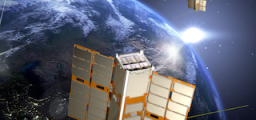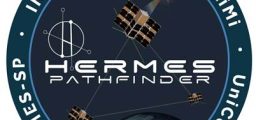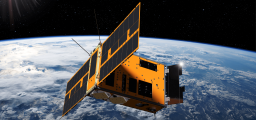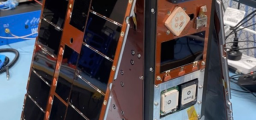Posted by: Marco Citossi
First light for the HERMES space telescope on board SpIRIT
The University of Melbourne, the Italian Space Agency, Australian Space Agency and the Italian National Institute of Astrophysics have announced the successful scientific operations of the HERMES Pathfinder space telescope instrument on board the SpIRIT satellite.
The space telescope earlier this year successfully collected light particles known as photons during a brief observation lasting about 10 minutes – a significant milestone astronomers call “first light” (see Figure 1).
The nanosatellite has been operating in a Polar orbit 513 km above Earth for more than 120 days since its launch on 1December 2023.
The HERMES Pathfinder is designed to scan the sky searching for bursts of gamma rays, which are created when stars die or collide and for a moment emit more energy than an entire galaxy.
These observations can only be performed by space telescopes and are crucial to advance our understanding of extreme physics and potentially unveil observational signatures of quantum gravity that, if found, will help unify the laws of physics.
SpIRIT is the first in a planned network of seven nanosatellites that will each carry the HERMES Pathfinder telescope. The Italian Space Agency is set to launch the other six nanosatellites in the next 12 months. This constellation of space telescopes will be able to simultaneously scan the sky for elusive gamma rays and pinpoint their origin by cross-correlating the signals received by each telescope.
Thanks to an efficient design and advances in low-noise high-performance detectors, the HERMES Pathfinder weighs just over 1.5kg and fits a cube with 10cm sides, yet it is almost as sensitive as state-of-the-art instruments a hundred times larger, such as the 115kg Fermi/Gamma-ray Burst Monitor, on massive satellites.
As SpIRIT was entrusted to carry the first telescope in the constellation, achieving its in-orbit operations is a significant milestone for the whole HERMES Pathfinder project.
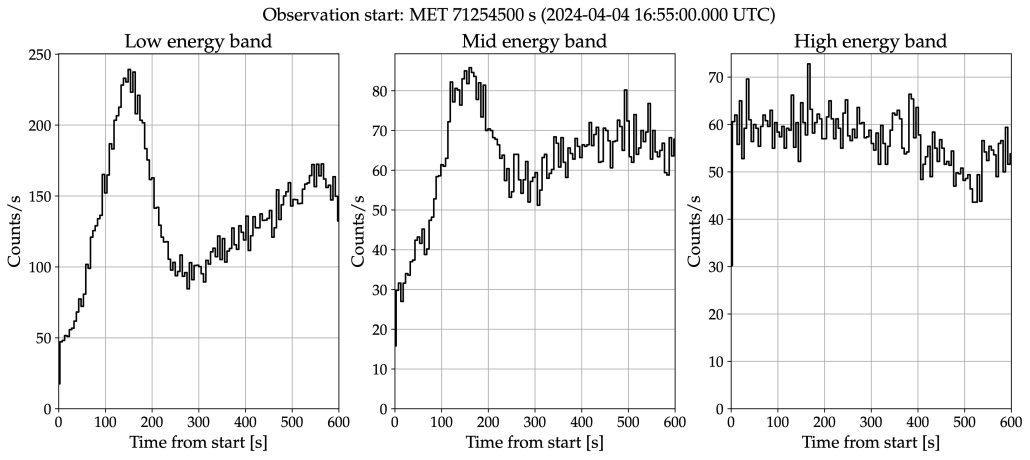

 Dr. Yuri Evangelista and Riccardo Campana, HPF Payload and Integration/Calibration managers, Italian National Institute of Astrophysics (INAF)
Dr. Yuri Evangelista and Riccardo Campana, HPF Payload and Integration/Calibration managers, Italian National Institute of Astrophysics (INAF)
“The first light observed with a spaceborne instrument is always very exciting, marking the moment when the detectors capture their first sight of the universe. For the HPF Payload team, the HERMES first light also represents the culmination of years of effort, with countless hours of planning, designing, developing, testing, and troubleshooting our compact and innovative X-ray and gamma ray monitor. Furthermore, the first HERMES/SpIRIT scientific operations give us confidence for the successful development and in-orbit operation of the next six satellites of the HPF constellation.”
 Jack McRobbie, SpIRIT operations lead, The University of Melbourne
Jack McRobbie, SpIRIT operations lead, The University of Melbourne
“The success of new hardware in space is elusive, especially for small satellites and teams such as SpIRIT. The 100 per cent success of University of Melbourne hardware is a great reward for our university team and supports our choice to base systems engineering on rigorous international standards tailored for our specific mission needs.”
 Giulia Baroni, HPF Scientific team member and PhD student, INAF“During my visit to the Mission Control Centre at the University of Melbourne, I had the opportunity to closely follow the team’s great commissioning work and witness the exciting moment when the first data arrived. As a student, considering the potential of this technology to advance innovative science is incredibly stimulating, especially knowing that this achievement is just the beginning.”
Giulia Baroni, HPF Scientific team member and PhD student, INAF“During my visit to the Mission Control Centre at the University of Melbourne, I had the opportunity to closely follow the team’s great commissioning work and witness the exciting moment when the first data arrived. As a student, considering the potential of this technology to advance innovative science is incredibly stimulating, especially knowing that this achievement is just the beginning.”
 Dr. Alejandro Guzman, HPF Payload Scientific Software Specialist, University of Tübingen
Dr. Alejandro Guzman, HPF Payload Scientific Software Specialist, University of Tübingen
It has been a challenge and a joy to coordinate with the team on the other side of the planet with many months of intense collaborative work. The culmination of the first scientific observation of the payload is a welcome reward to all the efforts done by everyone in the team. It is extremely satisfying to know that we have built a first-class scientific instrument and that is currently in operations in space.
 Dr. Simonetta Puccetti, HERMES Pathfinder project scientist for the Italian Space Agency and HERMES SOC Manager at ASI-SSDC, Italian Space Agency
Dr. Simonetta Puccetti, HERMES Pathfinder project scientist for the Italian Space Agency and HERMES SOC Manager at ASI-SSDC, Italian Space Agency
“We are very pleased to have contributed to the development of the HERMES Pathfinder payload on board SpIRIT and this new collaboration with Australia. The result of analysing the first-light data has been exciting! From such a small object we are getting data of scientific quality comparable to that of much larger satellites. Thanks to SpIRIT, we are getting valuable information about the in-orbit behaviour of our payload, which will be very useful in preparation for the launch of the HERMES Pathfinder constellation next year. “

Credits: ASI, University of Melbourne

